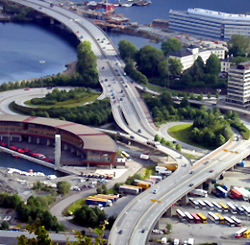Growing up in a one hundred year-old home, I learned how to fix plumbing problems.
One lesson was tracing all the pipes in the basement so I could tell which pipes had fresh water and which ones carried sewage.
You might say it was my first exposure to signal flow.
Signal flow is the flow of the audio signal from the sources of input to the places of output, from sound-to-loudspeaker, if you will.
Learning how to set up the stage, you see how the signal flows from an electric guitar to a pedal board to a DI box and then into a stage jack. Now you will see what happens to that signal once it gets to the sound booth.
Asking For Directions
An audio signal travels from the source towards some sort of output. For example, a singer’s voice is picked up by the microphone which, through a series of components, makes its way out to the house speakers. Consider this as the general directionality of the audio signal – from a source to a destination.
The sound booth is like a giant airport where signals are coming in and going out, from multiple sources to multiple destinations. Destinations can be house loudspeakers, floor monitors, recording software, and even church nursery loudspeakers. The primary component that takes care of all these transfers is the mixer.
Coming into the mixer, are a variety of sound sources which will all be assigned to the channels on the mixer. Naturally, you have your sources from the stage but you also have sources such as a computer, tape deck, CD player, and even audio feeds from video devices.
Once the signal is going to a channel, it tends to follow a general path that can vary slightly from one mixer to the next. From the signal input, it usually follows as such;
1) Gain control (controls how much of the signal you are letting into the system)
2) Insert loop (plugs in back of mixer for auxiliary effects)
3) High-pass filter (used to cut out frequencies below a fixed point)
4) Equalizer
5) Channel on/off or mute switch
6) Fader
7) Pan control (for stereo panning)
8) Out to groups (for control over multiple channels from one group channel)
9) Out to main fader control
Looking at the signal flow on the mixer channel, most extra on-board controls like compression and padding occur before the signal goes to the equalizer.
Also, signal to the auxiliary controls for the channel’s audio sends, such as for monitors, will be either before or after the fader depending on it the auxiliary control is set to send as pre-fade or post-fade.





















